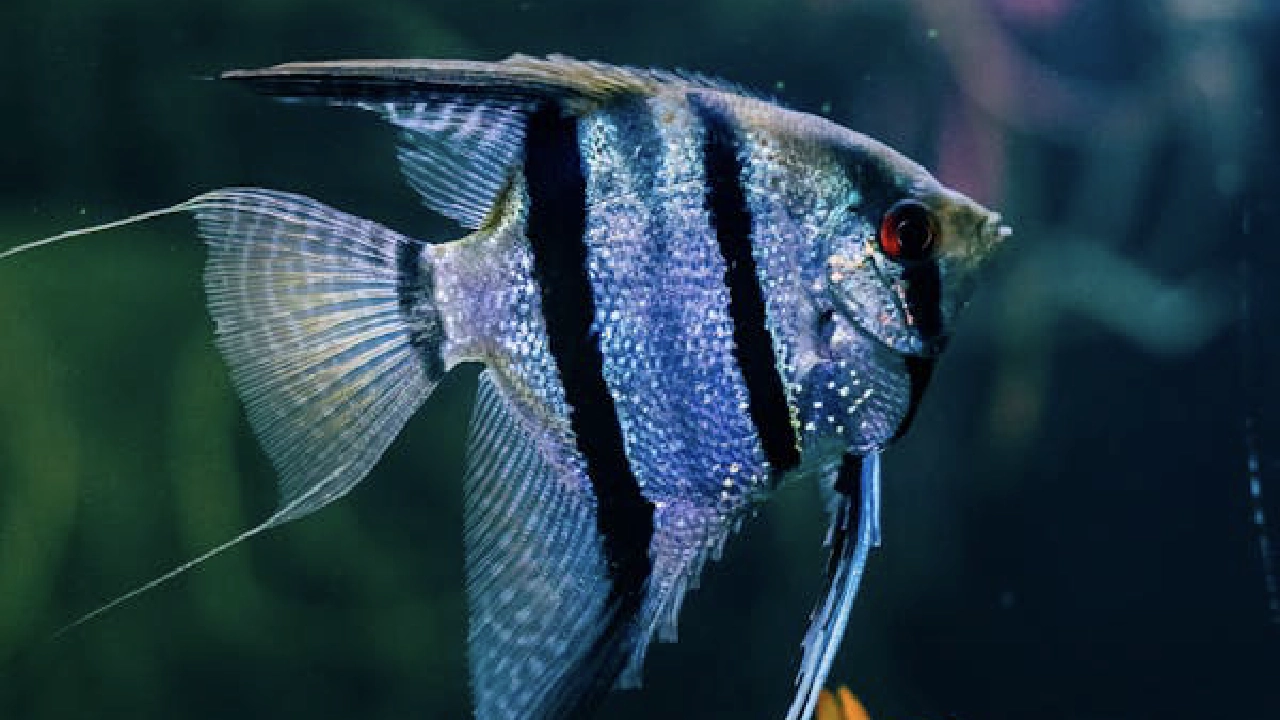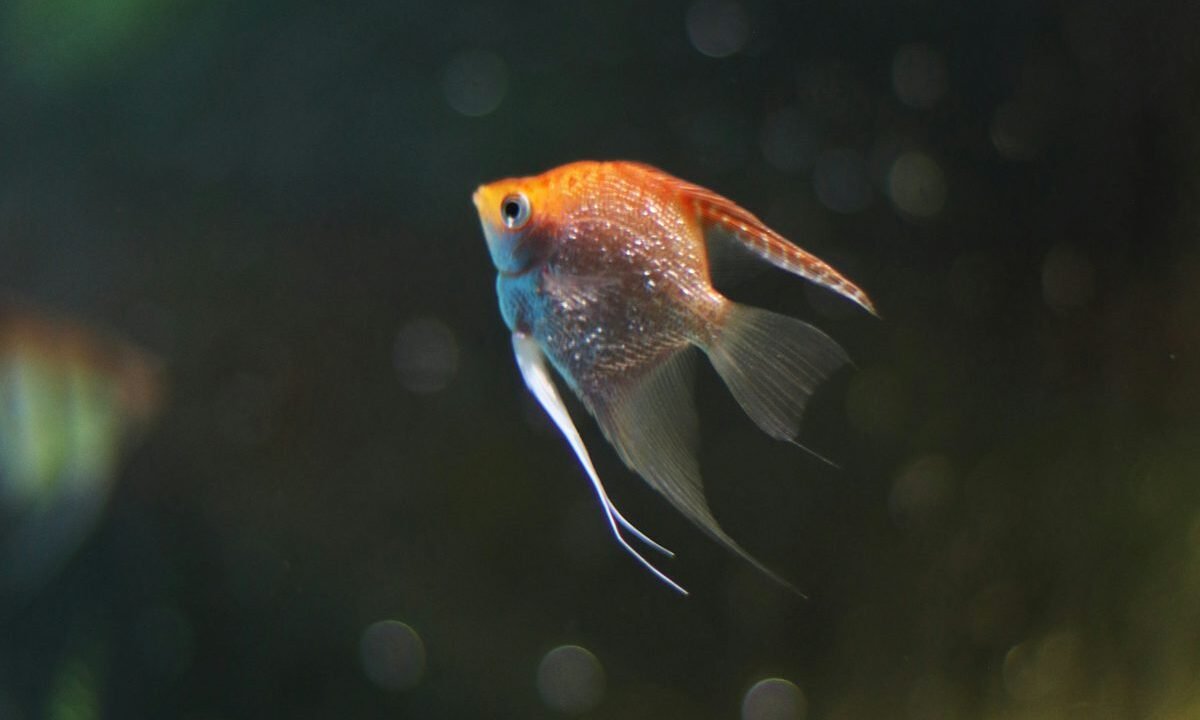When I bought an aquarium for the first time, the fish I wanted most was an angelfish. Gliding through the water like little glittering wisps. There is something magical about them.
With their elegant, triangular bodies and long, flowing fins, they bring a sense of calm and beauty to any home.
As beautiful and fascinating as they are, so is their care. This guide will focus on the things you need to keep in mind for your angelfish. In Singapore, where space is often limited, keeping an aquarium can be a perfect way to connect with nature — and angelfish make an excellent choice for beginners and experienced fish keepers alike. If you’re thinking about bringing these graceful creatures into your life, this guide will help you understand everything you need to know — from their diet and hygiene to their environment and even the fascinating process of breeding.
1. Creating the Right Environment for Angelfish
Angelfish come from the slow-moving waters of the Amazon, so they prefer warm, soft, and slightly acidic water — and that’s something we can replicate quite well here in Singapore. But setting up a comfortable and healthy environment takes more than just filling a tank with water.
- Tank Size: Angelfish need space. A 75-litre (20-gallon) tank is the absolute minimum for a pair, but a larger tank — around 150 litres (40 gallons) — is better, especially if you plan on having more fish. Their tall bodies also mean they do best in tanks that are higher than they are wide.
- Water Conditions: Keep the water temperature between 24°C and 28°C, with a pH level of 6.5 to 7.5. In Singapore’s humid climate, tank heaters and chillers can help maintain stable water temperatures.
- Filtration: A good filtration system is essential. Angelfish don’t like strong currents, so choose a filter with adjustable flow or one designed for gentle circulation.
- Decor and Plants: Angelfish love hiding spots and plants like Amazon swords, Java ferns, and anubias. Driftwood and smooth rocks can also make the tank more natural and appealing while giving your fish places to explore.
2. Keeping Angelfish Happy and Clean: Hygiene Matters
A clean tank isn’t just about aesthetics — it’s about health. Poor water quality is one of the fastest ways to make angelfish sick.
- Regular Water Changes: In Singapore’s warm climate, water evaporates quickly, which can concentrate waste and minerals. Change about 25% of the water every week to keep things balanced.
- Gravel Cleaning: Food and waste tend to settle in the substrate, so vacuum the gravel regularly to avoid harmful ammonia build-up.
- Monitoring Water Parameters: Invest in a good water testing kit. Check ammonia, nitrite, nitrate, and pH levels weekly — it’s a small habit that can prevent big problems.
- Avoid Overcrowding: Angelfish can get stressed in crowded tanks, leading to aggression and disease. Stick to the rule of about 38 litres (10 gallons) per adult fish.
3. Feeding Your Angelfish: A Balanced Diet
Feeding your angelfish isn’t just about keeping them full — it’s about keeping them healthy and vibrant. A well-fed angelfish will have brighter colours, more energy, and better immunity.
- High-Quality Pellets or Flakes: This should be their staple food. Look for options specifically made for angelfish or tropical fish, with high protein content.
- Live and Frozen Foods: Treat them to live or frozen brine shrimp, bloodworms, and daphnia once or twice a week. It keeps their diet varied and satisfies their natural hunting instincts.
- Vegetables: Blanched spinach, zucchini, or peas can be added occasionally for fiber and vitamins.
- Feeding Schedule: Feed small amounts twice a day — just enough that they finish within two minutes. Overfeeding can lead to obesity and water pollution.

4. Breeding Angelfish: A Rewarding Challenge
If you’ve fallen in love with your angelfish and want to try breeding them, you’re in for a fascinating journey. Breeding angelfish in Singapore’s climate is quite manageable, but patience and preparation are key.
- Pairing: Angelfish choose their own mates, so if you’re planning to breed, start with a small group of six and let them pair off naturally. Once a pair forms, you’ll notice them staying close and defending a particular area of the tank.
- Breeding Tank: Set up a separate breeding tank with similar water conditions but fewer distractions. Include a vertical surface like a flat rock or a breeding cone for them to lay their eggs on.
- Spawning: When ready, the female will lay rows of eggs, and the male will follow to fertilize them. You’ll see the pair guarding the eggs fiercely.
- Caring for Fry: After about 48 hours, the eggs will hatch. The parents often take care of their fry, but if they start eating them (which can happen), you might need to separate them. Feed baby brine shrimp or specialized fry food until they grow large enough for regular fish food.
5. Dealing with Common Health Issues
Even with the best care, angelfish can sometimes fall ill. Knowing the signs of common problems can help you act quickly.
- Ice (White Spot Disease): Small white spots on the body and fins, often caused by stress or sudden temperature changes. Treat with aquarium salt or anti-parasitic medications.
- Fin Rot: Frayed or discoloured fins, often due to poor water quality. Improve tank hygiene and use antibacterial treatments.
- Swim Bladder Disease: Difficulty swimming upright, often from overfeeding. Fast your fish for a day and then feed cooked, skinned peas to relieve constipation.
6. Building a Community Tank
Angelfish are generally peaceful, but their long fins can make them targets for fin-nipping fish. Good tankmates include tetras, gouramis, and corydoras catfish. Avoid aggressive species like tiger barbs or fish small enough to be seen as food, like tiny guppies.
Caring for angelfish in Singapore is a rewarding experience — one that brings beauty, serenity, and a sense of connection with nature. With the right environment, a balanced diet, and proper hygiene, your angelfish can live for 8 to 10 years, gracing your home with their graceful presence. One of the best experiences I’ve ever had was watching my angel fish take care of their young and whole family of angelfish swimming about in their curated environment. Simply ethereal.
Breeding angelfish adds another layer of wonder, watching new life unfold in your carefully tended aquarium. And through it all, the bond you develop with these gentle creatures makes every effort worthwhile.
So if you’re ready to welcome angelfish into your life, take the plunge with patience, care, and love. They’ll repay you with their elegance, charm, and the quiet joy they bring to your home.






